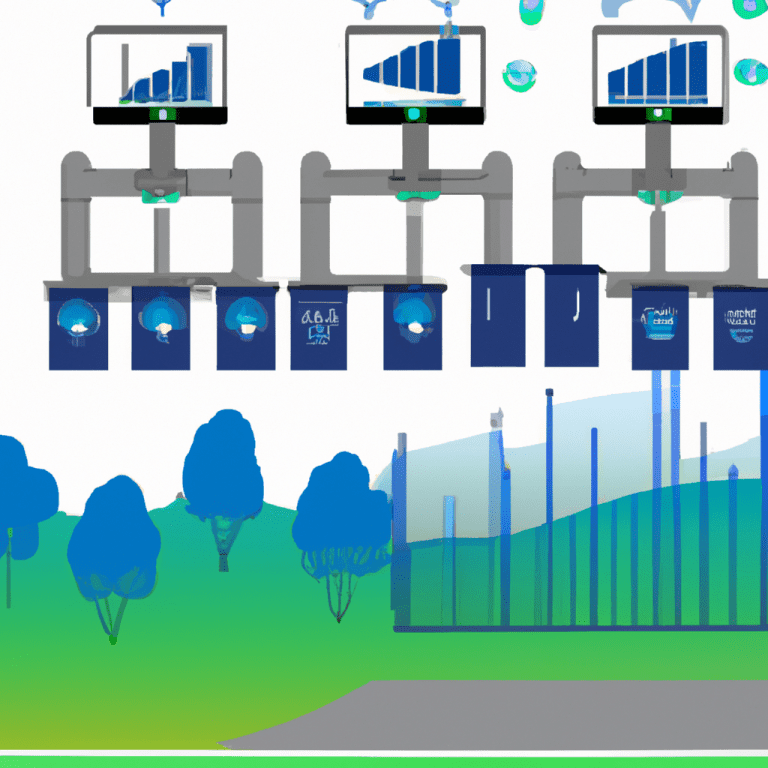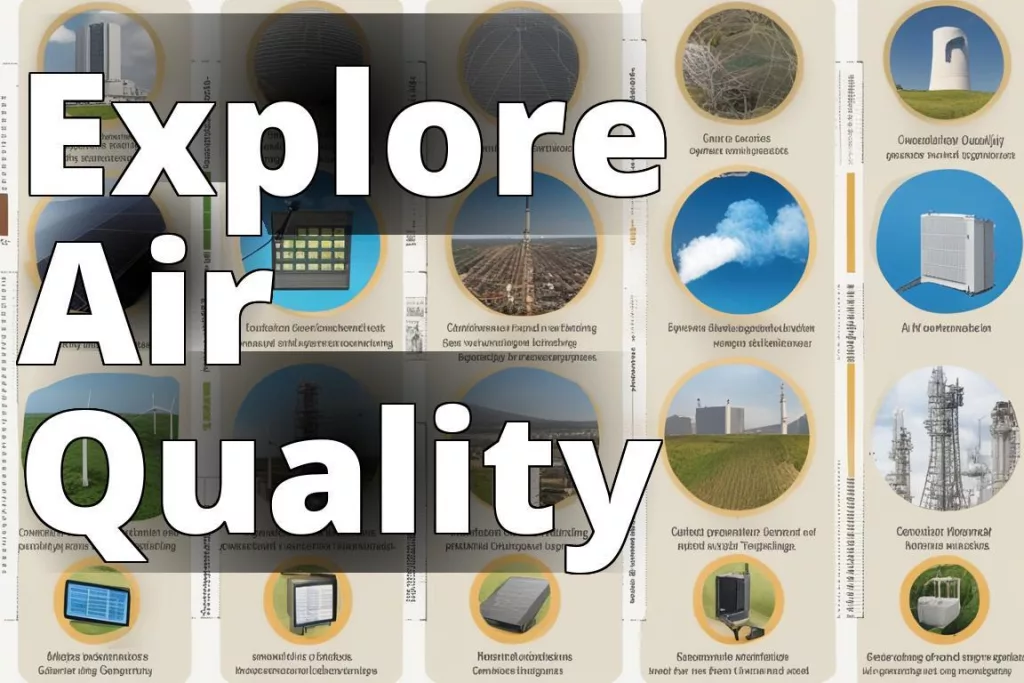Introduction
Air quality data provides important insights into levels of key pollutants, enabling governments to develop sound environmental policies and the public to take precautions when pollution is high. With growing concerns over the health impacts of air pollution, comprehensive and reliable data sources are essential.
This article explores the top 5 global sources for accessible, high-quality air quality data. We will evaluate the strengths and limitations of each source, examining factors like accuracy, coverage, timeliness, accessibility, and ease of interpretation. We will also discuss how collaboration between data providers helps overcome common challenges in collecting global air pollution statistics.
World Air Quality Index Project
The World Air Quality Index project collects real-time measurements from over 7,000 monitoring stations in 80 countries. The data is used to calculate a standardized Air Quality Index (AQI) value for locations worldwide. This index runs from 0 to 500+, with higher values indicating worse pollution levels.
The World Air Quality Index platform provides minimal gaps in coverage, especially across North America, Europe, and East Asia. Users can access current AQI readings and historical trends through interactive maps and bulk data downloads.
A key strength of this project is the extensive monitoring network, which allows users to check localized air quality data across the globe. The AQI also simplifies interpretation for the general public. However, data accuracy relies heavily on individual monitoring stations, some of which may be unreliable. There can also be lags in updating information.
Maintaining consistent data collection and reporting standards across different countries remains an ongoing obstacle. The project collaborates closely with local operators to minimize discrepancies. Expanding the monitoring network helps provide coverage in underserved regions.
European Environment Agency
The European Environment Agency (EEA) aggregates and verifies air quality data from over 30 countries in Europe, consisting of around 3,000 monitoring stations. The EEA collects measurements for pollutants like particulates (PM), ozone (O3), nitrogen dioxide (NO2), and sulfur dioxide (SO2).
The EEA’s Air Quality Index is an accessible resource, providing real-time readings and next-day forecasts through color-coded maps. Their dataset dates back to the 1990s and offers downloadable files for analysis. A key advantage is the strict verification applied to ensure data accuracy.
However, coverage is focused exclusively on Europe. While the index shows current pollution levels, it may lack nuanced details needed for in-depth research. Ongoing quality control across thousands of monitoring stations remains challenging but is facilitated through standardization initiatives. Expanding the monitoring network helps fill geographical gaps.
EPA AirNow
The U.S. Environmental Protection Agency’s AirNow program monitors air quality through thousands of stations in the U.S., Canada, and Mexico. AirNow uses a color-coded Air Quality Index based on ozone, particulate matter, carbon monoxide, sulfur dioxide, and nitrogen dioxide levels.
AirNow provides extensive real-time coverage across North America and simplifies air quality data for public use. However, its geographical scope is limited compared to global systems. While useful for general awareness, the index may lack specifics needed by researchers.
Maintaining consistent equipment quality and calibrating measurements for weather conditions present persistent challenges. Public outreach helps increase community engagement with air quality issues.
Copernicus Atmosphere Monitoring Service
The Copernicus Atmosphere Monitoring Service (CAMS) combines satellite observations, ground measurements, and computer models to analyze global air pollution. CAMS offers daily forecasts and real-time analysis of pollutants like ozone, nitrogen dioxide, and particulate matter.
A major strength of CAMS is its worldwide coverage. CAMS integrates diverse data sources to provide a comprehensive view of global air quality. However, this can result in less localized details compared to regional monitoring networks. Keeping different data collection methodologies consistent poses difficulties.
CAMS continuously refines its data assimilation techniques to generate accurate datasets. Adapting to evolving satellite and modeling technologies allows CAMS to maintain its position as a leading provider of global air pollution statistics.
OpenAQ Platform
OpenAQ aggregates air quality data from government agencies, non-profits, and citizen science initiatives into a publicly accessible platform. Users can access historical and real-time measurements through an API and bulk downloads. OpenAQ also provides analytical tools and visualizations.
The collaborative open-source approach promotes transparency and innovation. However, OpenAQ relies on external data sources, so coverage gaps may exist in certain regions. Ensuring consistent global data requires setting standards for accuracy and completeness. Keeping metadata on monitoring stations up-to-date also poses challenges.
By facilitating data sharing and method standardization, OpenAQ plays a pivotal role in harnessing air quality information for research, policymaking, and public awareness.
Summary of platform strengths
We have ranked each platform on a variety of criteria (data accuracy, coverage, timeliness, accessibility and ease of interpretation), where the rankings are on a scale of 1 to 5, with 5 being the highest/best.
| Platform | Data Accuracy | Coverage | Timeliness | Accessibility | Ease of Interpretation |
|---|---|---|---|---|---|
| World Air Quality Index Project | ⭐⭐⭐ [3 stars] | ⭐⭐⭐⭐ [4 stars] | ⭐⭐⭐⭐ [4 stars] | ⭐⭐⭐⭐ [4 stars] | ⭐⭐⭐⭐⭐ [5 stars] |
| European Environment Agency | ⭐⭐⭐⭐ [4 stars] | ⭐⭐⭐ [3 stars] | ⭐⭐⭐⭐ [4 stars] | ⭐⭐⭐⭐ [4 stars] | ⭐⭐⭐⭐ [4 stars] |
| EPA AirNow | ⭐⭐⭐⭐ [4 stars] | ⭐⭐ [2 stars] | ⭐⭐⭐⭐⭐ [5 stars] | ⭐⭐⭐⭐⭐ [5 stars] | ⭐⭐⭐⭐⭐ [5 stars] |
| Copernicus Atmosphere Monitoring Service | ⭐⭐⭐⭐ [4 stars] | ⭐⭐⭐⭐⭐ [5 stars] | ⭐⭐⭐⭐ [4 stars] | ⭐⭐⭐ [3 stars] | ⭐⭐⭐ [3 stars] |
| OpenAQ | ⭐⭐⭐ [3 stars] | ⭐⭐⭐ [3 stars] | ⭐⭐⭐⭐ [4 stars] | ⭐⭐⭐⭐⭐ [5 stars] | ⭐⭐⭐⭐ [4 stars] |
Data Downloading and APIs
The URLs to download air quality data and access the platform’s APIs are given in the table below:
| Platform | Main website | API Documentation | Data Download |
|---|---|---|---|
| World Air Quality Index Project | https://waqi.info/ | https://aqicn.org/api/ | https://aqicn.org/data-platform/register/ |
| European Environment Agency | https://www.eea.europa.eu/ | https://www.eea.europa.eu/data-and-maps/data/aqereporting-2 | https://www.eea.europa.eu/data-and-maps/data/aqereporting-8 |
| EPA AirNow | https://www.airnow.gov/ | https://docs.airnowapi.org/ | https://docs.airnowapi.org/Data/ |
| Copernicus Atmosphere Monitoring Service | https://atmosphere.copernicus.eu/ | https://ads.atmosphere.copernicus.eu/api-how-to | https://ads.atmosphere.copernicus.eu/api |
| OpenAQ | https://openaq.org/ | https://docs.openaq.org/ | https://openaq.org/#/download |
Next Steps
Round Table Environmental Informatics (RTEI) is a consulting firm that helps our clients to leverage digital technologies for environmental analytics. We offer free consultations to discuss how we at RTEI can help you.

